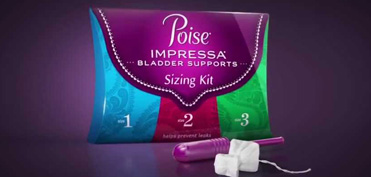What is Insomnia?
Insomnia is defined as a difficulty falling asleep and / or staying asleep during the night which results in feeling unrested the next day. The amount of sleep we need is different for every person. Some people may only need five hours while others may need more than nine hours. It’s not the number of hours you sleep but rather how rested you feel when awake that determines if someone suffers from insomnia.
People with insomnia often complain of feeling tired and irritable during the day and may have difficulty concentrating at work or school. In addition, ongoing insomnia may be associated with many mental and physical disorders such as anxiety, depression, high blood pressure, heart disease and diabetes.
What Causes Insomnia?
A few nights of poor sleep every now and then happens to everyone. Usually we can relate these “white” nights to something going on in our lives at the time (an illness, a new job, etc.) and when the situation resolves or we adjust to it, our sleep returns to normal.
For some people, however, their sleep problems continue for months and years even though the “precipitating” cause is no longer an issue. Insomnia lasting more than one month is often due to poor sleep habits, false beliefs about sleep and / or excessive worry about insomnia. Keep in mind that certain medications or medical / mental health issues can also interfere with sleep - check with your pharmacist or doctor.
Changes made to sleep patterns in an effort to correct insomnia such as napping during the day, going to bed earlier, and /or staying in bed later in the morning, may actually have the opposite effect and “perpetuate” insomnia. Worry about getting enough sleep can worsen insomnia by making it difficult to relax and “shut down” the mind. As insomnia persists, a person may become “conditioned” to being awake in bed and find that, no matter how tired, they immediately become wide awake as soon as they go to bed.
How does CBTi work?
CBTi addresses the underlying causes of insomnia using a combination of strategies which teach people how to change unhelpful sleep habits and negative thoughts and develop healthy sleep patterns. These strategies include:
• Tracking your sleep patterns in a personal sleep diary.
• Sleep restriction - reducing the time you spend in bed to the time you are actually asleep. This increases the drive to sleep and at the same time consolidates sleep to promote more restful sleep. Sleep restriction requires setting regular bed and wake times and getting out of bed and leaving the bedroom if awake during the night.
• Stimulus control - limiting of activities in the bed room just to sleep (and intimacy) in order to rebuild the association between the bedroom and sleep. This includes not reading or watching television while in bed.
• Thought therapy - identifies and addresses any negative or misleading thoughts or beliefs about sleep.
• Relaxation techniques - helps to counteract conditioned arousal at bedtime or when awake in the middle of the night.
CBTi versus sleeping pills
Sleeping pills are easy to take and may work more quickly in the short term, but they lose effectiveness in the long term. However, even though they quit working, coming off them becomes hard because dependence develops within a few weeks.
CBTi is challenging in the short term, but eventually results in long term improvement. For CBTi to be successful, a person has to commit to follow sleep and stimulus control restrictions which may be somewhat difficult at first. Also, it may take a few weeks of CBTi before sleep begins to improve. Once a person has learned how to manage their sleep with CBTi, however, the benefits are long-lasting. Even though relapses may occur, a person trained in CBTI has the skills to re-establish a healthy sleep pattern.
Sleeping pills have side effects such as next day drowsiness and fatigue which may weaken concentration and slow reflexes. This can have a negative
effect on work or school activities as well as increase the risk of car accidents and injuries from falls.
When taken regularly as mentioned above, many sleeping pills also cause physical and psychological dependence. Physical dependence means that stopping the medications will cause withdrawal symptoms such as anxiety, irritability, shaking, upset stomach, and short-term worsening of insomnia. Psychological dependence means believing that you won’t be able to sleep without the medication.
Other than the temporary increase in daytime fatigue that may occur during the first few weeks of sleep restriction, CBTi is not associated with side effects. In addition, CBTi can help people reduce or eliminate their dependence on sleeping pills.
How to access CBTi
Although the treatment of choice, CBTi is not widely available mainly due to a lack of trained providers. Your doctor may be able to refer you to a sleep specialist but there is often a long waiting list.
PharmaZzz is a research group at the U of S, College of Pharmacy & Nutrition program which trains pharmacists to provide CBTi to people with insomnia. The aim of the PharmaZzz program is to increase patient access to CBTi and reduce inappropriate use of sleeping medication through our community pharmacists. For a list of pharmacists who can offer CBTi, go to
http://www.medsask.usask.ca/documents/cbti-documents/PharmaZzz%20Pharmacists.pdf
Other options for CBTi include:
• Online programs:
Shuti at www.myshuti.com
Sleepio at www.sleepio.com
• Self-help books:
The Insomnia Workbook (Silberman);
Say Good night to Insomnia (Jacobs);
Sink into Sleep (Davidson)
Pursuing one of the above ways to obtain CBTi is very likely to be your best option in the long run. For more information, contact Karen Jensen Co-Investigator, PharmaZzz Group: email cbti.program@usask.ca; phone 306-966-1330.
Prepared by
K. Jensen, medSask;
Reviewed by
L. Regier, RxFiles and
Dr. A.J. Remillard
College of Pharmacy & Nutrition
University of Saskatchewan
August 2017
References:
1. Toward Optimized Practice. Assessment to management of adult insomnia. Clinical Practice Guideline. December 2015. Available at http://www.topalbertadoctors.org/download/1920/Adult%20Insomnia%20CPG.pdf?_20160327212120.
Accessed August 2017
2. Qaseem A, Kansagara D, et al. Management of chronic insomnia disorder in adults: a clinical
practice guideline from the
American College of Physicians. Ann Intern Med. 2016. http://annals.org/aim/article/2518955/.
3. Centre for Effective Practice. Management of Chronic Insomnia.
Jan 2017. Available at https://thewellhealth.ca/wp-content/uploads/2017/01/20170116_Insomnia_FINAL.pdf.
Accessed Aug 2017.
4. Perlis M, Jungquist C et al. Cognitive behavioral treatment of insomnia a session-by-session guide. New York, N.Y: Springer; 2005.
5. Jacobs GD. Say good night to insomnia. New York, N.Y: Henry Holt; 2009.







